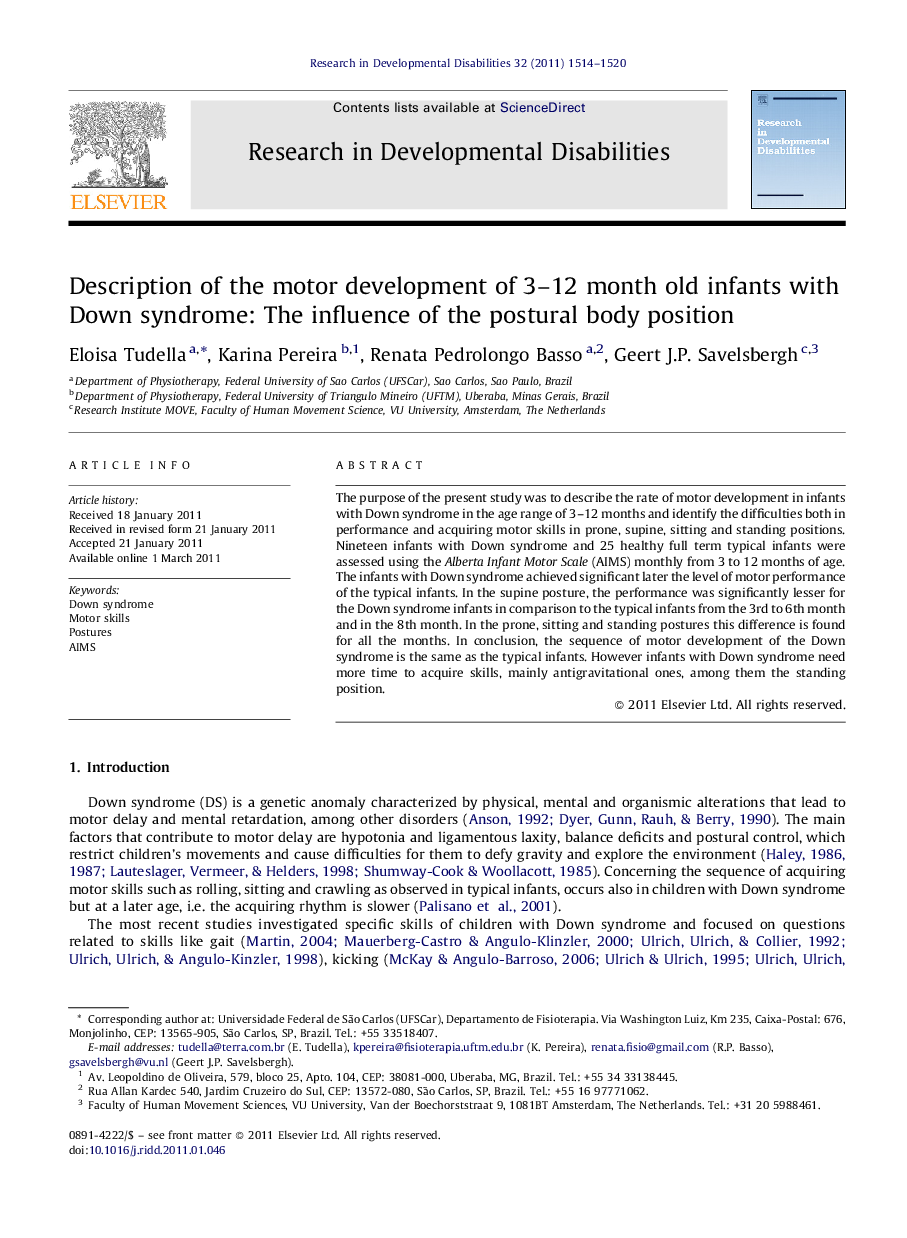| Article ID | Journal | Published Year | Pages | File Type |
|---|---|---|---|---|
| 371679 | Research in Developmental Disabilities | 2011 | 7 Pages |
The purpose of the present study was to describe the rate of motor development in infants with Down syndrome in the age range of 3–12 months and identify the difficulties both in performance and acquiring motor skills in prone, supine, sitting and standing positions. Nineteen infants with Down syndrome and 25 healthy full term typical infants were assessed using the Alberta Infant Motor Scale (AIMS) monthly from 3 to 12 months of age. The infants with Down syndrome achieved significant later the level of motor performance of the typical infants. In the supine posture, the performance was significantly lesser for the Down syndrome infants in comparison to the typical infants from the 3rd to 6th month and in the 8th month. In the prone, sitting and standing postures this difference is found for all the months. In conclusion, the sequence of motor development of the Down syndrome is the same as the typical infants. However infants with Down syndrome need more time to acquire skills, mainly antigravitational ones, among them the standing position.
Research highlights► Down syndrome infants achieved later the level of motor performance of the typical. ► The sequence of motor development is the same as the typical infants. ► Infants with Down syndrome need more time to acquire mainly antigravitational skills. ► They showed significant changes in the motor performance in the interval of 4 months.
